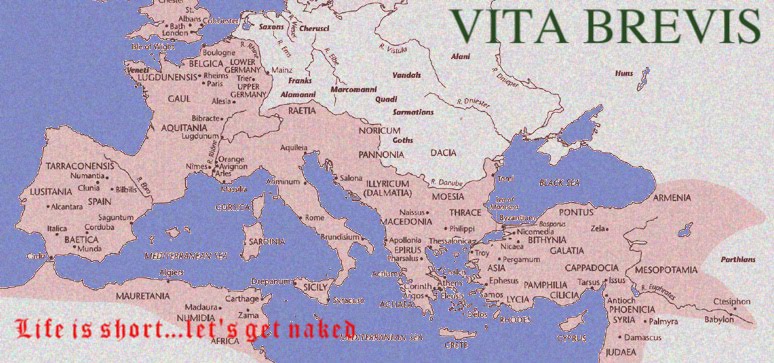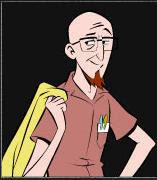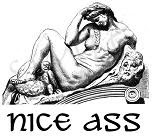In case you're living under a rock--and if you are, hey, more power to you, I don't judge (freak)--you know of the untimely passing of Prince yesterday. The diminutive yet iconic rock star was only 57 when he shuffled off this mortal coil.
This past December, I turned 40. I'm definitely into my middle ages (yea verily and a hey nonny nonny to you); I'm not sure when it happened, but it did. I turned into an adult and, though my memories continue to keep me trapped in a continuous loop as a younger, more vibrant version of myself, I am sometimes reminded that I have been alive and cruising through this plane of existence for four decades.
As a middle-aged man, my childhood was stretched across the 1980s, though I still consider the early 90s (when I was in high school) to be the wheelhouse of my musical preference and formative years. Yes, grunge rock has risen and faded, leaving its fingerprint on the current alternative music universe, and though the heyday of alternative may be behind us, I still love it. However, to ignore the influence that artists like Madonna, Michael Jackson and Prince had on my musical tastes would be ludicrous.
 |
Isn't she supposed to be wearing
not much more? |
When Michael Jackson died (again, shockingly and suddenly), I realized that my youth was behind me. Those halcyon days were past; MJ's death took a little piece of me with him. Not only was I reminded of my own mortality, but I was shown that the icons of my childhood were no longer titanic and immortal. With time, all things would pass, and even those giants of my youth would be beginning to slip away.
It's already been well-documented how much 2016 has sucked as far as losing talented and well-beloved celebrities. It may be a quick summation of those we've lost, but there are a few that stick out in my mind above all others. Earlier in the year, we had the double gut-punch of losing both David Bowie and Alan Rickman to cancer. Abe Vigoda finally changed the website tracking his mortality to "yes." Merle Haggard has also passed. And yesterday, of course, we lost Prince.
I will be honest: growing up, I was never a huge fan of Prince. I knew his music and I liked most of it; there were times, though, when I grew tired of the constant replays that pumped out over the airwaves in the upper corner of Northeastern Indiana (a land renowned the world over for being a hotbed of musical variety). It got worse as we slumped toward the end of the millennium and 1999 seemed to be on an endless loop.
As I have grown older, and my children have suddenly discovered the music of the 80s, I developed a new appreciation for Prince (and Michael Jackson, but that's because my kids treat him like I treated the Beatles growing up...talk about feeling old...). The only Prince I was ever exposed to growing up was what I could pull in on my little clock radios; Prince was "too weird" to be allowed in my house growing up. But now, when I'm surfing through the stations, and I hear Prince on one of them, I stop. I listen. I remember. Most importantly, I appreciate.
Another important thing is that Prince had a long career, influencing and making music for our enjoyment. He was a celebrity, an icon, a leader in the industry, and a musical genius; however, you never heard anything from him that was remotely scandalous. The biggest issue was his fight with the music companies and when he changed his name to a symbol. Think about that today, in our celebrity-obsessed culture, where those icons we pay a little too much attention to say or do something wrong or dumb or downright stupid. This never plagued Prince. Prince was always just Prince. Nothing more, nothing less.
With that being said, Purple Rain is still a fucking awesome song.
Princeps mortuus est; vivat princeps!
Pronounced: "Prin-keps more-too-us est; wee-what prin-keps!"
Hovertext for the translation; bottom of the screen for mobile translation.
I still love this pun. Animaniacs was the best.
The word "princeps" was used in Rome to mean "first man" or "leader" or even "chief." Rome, somewhat notoriously, began as a kingdom, where the word "rex" was used for the title "king," although it probably meant something more along the lines of "chief" in those early days. Once the kings were overthrown and the Republic was formed, the idea of becoming a king in Roman eyes was deplorable, at best, and cause for murder, at worst (see: Caesar, Julius). As the Roman state moved away from the Republic and more into the rule under one man, the term "rex" was not used to avoid linking the Emperors with kings (Jennifer Lawrence's "okay, yeah, right" .gif goes here); instead, the title "princeps" was used to designate the leader, or the first man of Rome.
The term later moved through various iterations to become the first man in line to inherit the throne after the king. A shortened version of the word became the title a king's heir received, whether it was his son or his brother or even his uncle--looking at you, Scar--and thus prince entered into the English language (thanks to the Normans). In case you were wondering, principissa was the feminine version of the word, with the feminine and diminutive forms tacked on the end. It's more of a "New Latin" construct, but it does mean princess.
I realize, given the shock and fondness that many people had for Prince, it's an easy pun to make, but I do think that this weekend as we reflect on the passing of a rock and musical genius, we all know what it sounds like when doves cry.
Translation: "(The)Prince is dead; long live (the) Prince!"













